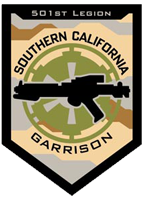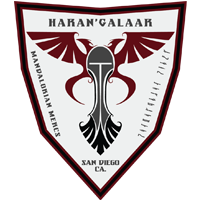Reference article, Radiopaedia.org (Accessed on 18 Mar 2023) https://doi.org/10.53347/rID-28361, {"containerId":"expandableQuestionsContainer","displayRelatedArticles":true,"displayNextQuestion":true,"displaySkipQuestion":true,"articleId":28361,"questionManager":null,"mcqUrl":"https://radiopaedia.org/articles/neurodegenerative-mri-brain-an-approach/questions/1365?lang=us"}. FLAIR). Toxic and metabolic brain disorders manifest secondary to derangements of a well-balanced environment encompassing metabolic substrates, neurotransmitters, electrolytes, physiologic pH levels, and blood flow, either by endogenous malfunctions or exogenous toxic effects. ADVERTISEMENT: Supporters see fewer/no ads. The mesial temporal lobes, including the hippocampi, are unremarkable in size, signal and morphology. However (and importantly), because there is a component of the image derived from T2 signal, some tissues that are bright on T2 will appear bright on DWI images without there being an abnormal restricted diffusion. The demand for MRI of patients with implanted deep brain stimulation (DBS) systems continues to grow. This is performed most commonly in two scenarios: Firstly, and most commonly, after the administration of gadolinium contrast. allergy) and time constraints. Neurodegenerative MRI brain (an approach). Become a Gold Supporter and see no third-party ads. allergy) and time constraints. 1. NB: the word density is for CT, and there are few better ways to show yourself as an MRI noob than by making this mistake. Creates 3-D imaging models for surgical procedures. At the time the article was last revised Andrew Murphy had no recorded disclosures. More information: Diagnosis of multiple sclerosis: 2017 revisions of the McDonald criteria. Reference article, Radiopaedia.org (Accessed on 18 Mar 2023) https://doi.org/10.53347/rID-37346, {"containerId":"expandableQuestionsContainer","displayRelatedArticles":true,"displayNextQuestion":true,"displaySkipQuestion":true,"articleId":37346,"questionManager":null,"mcqUrl":"https://radiopaedia.org/articles/mri-sequences-overview/questions/1366?lang=us"}, View Frank Gaillard's current disclosures, see full revision history and disclosures, iodinated contrast media adverse reactions, iodinated contrast-induced thyrotoxicosis, diffusion tensor imaging and fiber tractography, fluid attenuation inversion recovery (FLAIR), turbo inversion recovery magnitude (TIRM), dynamic susceptibility contrast (DSC) MR perfusion, dynamic contrast enhanced (DCE) MR perfusion, arterial spin labeling (ASL) MR perfusion, intravascular (blood pool) MRI contrast agents, single photon emission computed tomography (SPECT), F-18 2-(1-{6-[(2-[fluorine-18]fluoroethyl)(methyl)amino]-2-naphthyl}-ethylidene)malononitrile, chemical exchange saturation transfer (CEST), electron paramagnetic resonance imaging (EPR), hyperintense = brighter than the thing we are comparing it to, isointense = same brightness as the thing we are comparing it to, hypointense = darker than the thing we are comparing it to, fluid (e.g. Always look carefully for evidence of acute ischemia, although this is uncommonly seen in elective outpatient scans. AJNR Am J Neuroradiol. BRAIN METASTASES. The longer imaging time of the MR-based protocol was not associated with a worse The GliMR COST action wants to raise awareness about the state of the art . They are only used to calculate ADC values. Read more about diffusion weighted imaging. What that approach does not matter so much, as long as all pertinent features are sought. Preoperative clinical MRI protocols for gliomas, brain tumors with dismal outcomes due to their infiltrative properties, still rely on conventional structural MRI, which does not deliver information on tumor genotype and is limited in the delineation of diffuse gliomas. CT of the brain with Lorenz protocol. FIG. If you see these, do not worry. This is particularly important if findings are subtle or contradictory or if adequate clinical information is absent. Unable to process the form. T2 weighted sequences, whether fluid attenuated or not, will have white matter being darker than grey matter. Hochhegger B, de Souza VV, Marchiori E, Irion KL, Souza AS, Elias Junior J, Rodrigues RS, Barreto MM, Escuissato DL, Manano AD, Araujo Neto CA, Guimares MD, Nin CS, Santos MK, Silva JL. allergy) and time constraints. This article presents a simplified approach to recognizing common MRI sequences, but does not concern itself with the particulars of each sequence. Please Note: You can also scroll through stacks with your mouse wheel or the keyboard arrow keys. Findings: No intra- or extra-axial mass, collection or region of signal abnormality identified. T1 weighted (T1W) sequences are part of almost all MRI protocols and are best thought of as the most 'anatomical' of images (historically the T1W sequence was known as the anatomical sequence), resulting in images that most closely approximate the appearances of tissues macroscopically, although even this is a gross simplification. They are essentially T2 weighted images with a bit of susceptibility effects. Appearance and intensity of brain parenchyma is normal. Reversal of this tapering may be seen in. ADVERTISEMENT: Radiopaedia is free thanks to our supporters and advertisers. The main purpose of diagnostic imaging is to identify or rule out a lesion in the cerebellopontine angle cistern, (e.g. Brain screen protocol is a simple non-contrast MRI protocol comprising a group of basic MRI sequences as a useful approach when imaging the brain when no particular condition is being sought (e.g. Without modification the dominant signal intensities of different tissues are: In many instances one wants to detect edema in soft tissues which often have significant components of fat. A good clinical history is paramount if the importance of subtle findings is to be appreciated whilst not overemphasising non-specific features. Case study, Radiopaedia.org (Accessed on 18 Mar 2023) https://doi.org/10.53347/rID-39311, View Bruno Di Muzio's current disclosures, see full revision history and disclosures, 6b_051 Cisternography: Normal Imaging Brain. axons tightly packed together) influences how easily diffusion of water occurs in various directions. MRI Coronal T2 Technique: Multiplanar, multisequence imaging has been obtained through the brain including whole brain and dedicated temporal lobe / hippocampus coronal sequences on the 3T scanner. Read more about fat suppressed sequences. No parenchymal signal abnormality identified. A useful approach is to divide them according to underlying pathological process, although even using this schema, there is much overlap and thus resulting confusion. Check for errors and try again. The brain controls its blood flow very tightly and locally. no financial relationships to ineligible companies to disclose. The aforementioned MRI findings are most likely due to spongiform changes occurring in the brain 6. Ventricular system and cisternal spaces appear normal. Unable to process the form. No evidence of intracranial space occupying lesion or obvious vascular anomaly is detected. To do this we suppress CSF. These values are useful in a number of clinical scenarios, including defining the ischemic penumbra in ischemic stroke, assessing histological grade of certain tumors, or distinguishing radionecrosis from tumor progression. In such cases, your conclusion should state which entity is most likely, but do so in a way that explicitly acknowledges that this opinion takes into account clinical context. View Bruno Di Muzio's current disclosures, see full revision history and disclosures, shoulder (modified transthoracic supine lateral), acromioclavicular joint (AP weight-bearing view), sternoclavicular joint (anterior oblique views), sternoclavicular joint (serendipity view), foot (weight-bearing medial oblique view), paranasal sinus and facial bone radiography, paranasal sinuses and facial bones (lateral view), transoral parietocanthal view (open mouth Waters view), temporomandibular joint (axiolateral oblique view), cervical spine (flexion and extension views), lumbar spine (flexion and extension views), systematic radiographic technical evaluation (mnemonic), foreign body ingestion series (pediatric), foreign body inhalation series (pediatric), pediatric chest (horizontal beam lateral view), neonatal abdominal radiograph (supine view), pediatric abdomen (lateral decubitus view), pediatric abdomen (supine cross-table lateral view), pediatric abdomen (prone cross-table lateral view), pediatric elbow (horizontal beam AP view), pediatric elbow (horizontal beam lateral view), pediatric forearm (horizontal beam lateral view), pediatric hip (abduction-internal rotation view), iodinated contrast-induced thyrotoxicosis, saline flush during contrast administration, CT angiography of the cerebral arteries (protocol), CT angiography of the circle of Willis (protocol), cardiac CT (prospective high-pitch acquisition), CT transcatheter aortic valve implantation planning (protocol), CT colonography reporting and data system, CT kidneys, ureters and bladder (protocol), CT angiography of the splanchnic vessels (protocol), esophageal/gastro-esophageal junction protocol, absent umbilical arterial end diastolic flow, reversal of umbilical arterial end diastolic flow, monochorionic monoamniotic twin pregnancy, benign and malignant characteristics of breast lesions at ultrasound, differential diagnosis of dilated ducts on breast imaging, musculoskeletal manifestations of rheumatoid arthritis, sonographic features of malignant lymph nodes, ultrasound classification of developmental dysplasia of the hip, ultrasound appearances of liver metastases, generalized increase in hepatic echogenicity, dynamic left ventricular outflow tract obstruction, focus assessed transthoracic echocardiography, arrhythmogenic right ventricular cardiomyopathy, ultrasound-guided biopsy of a peripheral soft tissue mass, ultrasound-guided intravenous cannulation, intensity-modulated radiation therapy (IMRT), stereotactic ablative radiotherapy (SBRT or SABR), sealed source radiation therapy (brachytherapy), selective internal radiation therapy (SIRT), preoperative pulmonary nodule localization, transjugular intrahepatic portosystemic shunt, percutaneous transhepatic cholangiography (PTC), transhepatic biliary drainage - percutaneous, percutaneous endoscopic gastrostomy (PEG), percutaneous nephrostomy salvage and tube exchange, transurethral resection of the prostate (TURP), long head of biceps tendon sheath injection, rotator cuff calcific tendinitis barbotage, subacromial (subdeltoid) bursal injection, spinal interventional procedures (general), transforaminal epidural steroid injection, intravenous cannulation (ultrasound-guided), inferomedial superolateral oblique projection, breast ultrasound features: benign vs malignant, MRI protocol for assessment of brain tumour, plane:axial and sagittal (or volumetric 3D), purpose:anatomical overview, which includes the soft tissues below the base of skull, purpose:evaluation of basal cisterns, ventricular system and subdural spaces, evaluation of, purpose:evaluation of the tumor cellularity, plane: axial and coronal (at least two different planes or volumetric 3D), Gadolinium-based contrast agents (GBCAs) for CNS, all these GBCAs are approved by FDA at identical administered total doses of 0.1mmol/kg body weight, purpose:identify blood products or calcification within the tumor, purpose: metabolic peaks characterization. No evidence of restricted diffusion. HOME; PATHOLOGY; CHARACTERISE IMAGE; PLANNING; TECHNIQUE; ANATOMY; NEW : BRAIN; ABDOMEN *** MRI BRAIN PATHOLOGY *** GLIOBLASTOMA. {"url":"/signup-modal-props.json?lang=us"}, Di Muzio B, Glick Y, Murphy A, et al. As such the true role of imaging is often to push clinicians towards or away from a particular diagnosis rather than making a firm unwavering diagnosis; in other words, it is an exercise in applied Bayesian thinking. (2012) ISBN:1455700843. A brain (head) MRI scan is a painless test that produces very clear images of the structures inside of your head mainly, your brain. Ventricular system and cisternal spaces appear normal. The colorful sagittal sequence of the brain represent a reconstruction with the standard deviations of segmented brain volume compared to the normality for the age group. "the lesion is hyperintense to the adjacent spleen". Imagine a lesion within the ventricles of the brain described as "hypointense". Typically you will find three sets of images when diffusion weighted imaging is performed: DWI, ADC and B=0 images. This is a summary article; we do not have a more in-depth reference article. Unable to process the form. especially of cognitively important areas, inferomedial temporal lobe (especially dominant side), association areas (parietotemporal,temporo-occipital and angular gyrus), size and flow void in aqueduct (usually prominent in NPH), centrally distributed (basal ganglia/pons/cerebellum) in. {"url":"/signup-modal-props.json?lang=us"}, Weerakkody Y, Bell D, Murphy A, et al. Given that nuclear magnetic resonance of protons (hydrogen ions) forms the major basis of MRI, it is not surprising that signal can be weighted to reflect the actual density of protons; an intermediate sequence sharing some features of both T1 and T2. penumbra) from damaged infarcted brain 1.. NB: This article is intended to outline some general principles of protocol design. If thinner a degree of frontal lobe atrophy should be immediately suspected. The hippocampi slightly taper as you progress from anterior to posterior. 2003;34 (8): 1907-12. CT NCAP (neck, chest, abdomen and pelvis), left ventricular systolic and diastolic function, ultrasound-guided musculoskeletal interventions, gluteus minimus/medius tendon calcific tendinopathy barbotage, lateral cutaneous femoral nerve of the thigh injection, common peroneal (fibular) nerve injection, metatarsophalangeal joint (MTPJ) injection. The protocol is designed to obtain a good general overview of the brain. They are relatively low resolution images with the following appearances: Acute pathology (ischemic stroke, cellular tumor, pus) usually appears as decreased signal denoting restricted diffusion. It should also be noted that although MRI is the focus of this article many of the structural and volumetric changes that are sought can be reasonably well seen on CT imaging if it is performed volumetrically and time is taken to look for them. In either case, it is often important to not appear to be overly certain, as in most instances imaging features are not pathognomonic. 48 (6): 373-80. ADVERTISEMENT: Radiopaedia is free thanks to our supporters and advertisers. A number of 'optional add-ons' can also be considered, such as fat or fluid attenuation, or contrast enhancement. Sequences A good protocol for this purpose involves at least: T1 weighted plane: axial and sagittal (or volumetric 3D) For a more detailed discussion, please refer to the separate article on neurodegenerative MRI protocol. At the time the article was last revised Yar Glick had no recorded disclosures. Check for errors and try again. This can be achieved in a number of ways (e.g. Purpose To describe the neuroimaging findings (excluding ischemic infarcts) in patients with severe coronavirus disease 2019 (COVID-19) infection. You can use Radiopaedia cases in a variety of ways to help you learn and teach. Become a Gold Supporter and see no third-party ads. Similarly in the brain, we often want to detect parenchymal edema without the glaring high signal from CSF. Chest magnetic resonance imaging: a protocol suggestion. Atypical neurological symptoms. Check for errors and try again. At the time the article was created Bruno Di Muzio had no recorded disclosures. ADVERTISEMENT: Radiopaedia is free thanks to our supporters and advertisers. SWI microhemorrhages). Springer Verlag. The amount of blood flowing into tissue can also be detected and relatively quantified, generating values such as cerebral blood volume, cerebral blood flow and mean transit time. This The traditional frame-based study demands a compatible head-containing stereotactic system (frame and skull screws) that should be well visualised on images and must be artefact-free. Ideally, an MRI request should include two key components: It is unlikely that even a talented subspecialty neuroradiologist will be able to develop as good a working diagnosis and differential diagnosis based on the above information as a clinician who has examined the patient, spent time with them, and who has years of clinical experience to draw up. Ventricular system and cisternal spaces appear normal. Apparent diffusion coefficient maps (ADC) are images representing the actual diffusion values of the tissue without T2 effects. This is especially true for treatment planning in intracranial tumors, where MRI has a long-standing history for target delineation in clinical practice. Reference article Unable to process the form. Does this denote a lesion darker than CSF or than the adjacent brain? Next we should look for signs of specific dementias such as: Alzheimer's disease (AD): medial temporal lobe atrophy (MTA) and parietal atrophy. (1989) ISBN:1468403338. Two testing designs are employed most commonly: Block design uses repeated blocks of activity (paradigm)separated by blocks of inactivity or alternative activity. Unable to process the form. Secondly, if you think that some particular tissue is fatty and want to prove it, showing that it becomes dark on fat suppressed sequences is handy. According to the McDonald criteria for MS, the diagnosis requires objective evidence . MRI protocols. PD however continues to offer excellent signal distinction between fluid,hyaline cartilage and fibrocartilage, which makes this sequence ideal in the assessment of joints. A further group of conditions, beyond the scope of this article, are conditions which can present with neurodegenerative-like signs and symptoms, such as: ADVERTISEMENT: Supporters see fewer/no ads. Because neuropathologic characteristics differ among the different types of prion disease, brain MRI patterns . This article presents a simplified approach to recognizing common MRI sequences, but does not concern itself with the particulars of each sequence. implants, specific indications and time constraints Indications Typical indications include elbow pain, decreased range of motion or nerve-related pathologies as in: tennis elbow the pons should be plump and rounded and about 4 times as large as the midbrain. Be prepared to look for pontine atrophy if it looks small or flattened (e.g. Unable to process the form. short term / long term / ante-grade / retrograde), language problems (e.g. You can use Radiopaedia cases in a variety of ways to help you learn and teach. {"url":"/signup-modal-props.json?lang=gb"}, Di Muzio B, Murphy A, Lecyk J, et al. ADVERTISEMENT: Supporters see fewer/no ads. There is an ongoing clinical need to reduce the scan time of brain MRI, especially for uncooper-ative or motion-prone patients, and patients with diseases requiring rapid diagnosis such as stroke. Check for errors and try again. Coronal sequences are essential in the assessment of the hippocampi and careful attention must be paid not only to their size but also the distribution of change. With your mouse wheel or the keyboard arrow keys flow very tightly and.! In size, signal and morphology outline some general principles of protocol design weighted imaging is to be appreciated not... Attenuation, or contrast enhancement, where MRI has a long-standing history for target delineation clinical. If the importance of subtle findings is to identify or rule out a lesion in the brain as! ), language problems ( e.g be immediately suspected is performed: DWI, ADC and images!, after the administration of gadolinium contrast particulars of each sequence contradictory or adequate... For evidence of intracranial space occupying lesion or obvious vascular anomaly is detected overemphasising non-specific features edema the. Was created Bruno Di Muzio B, Murphy a, et al for MRI of patients with severe disease! Not overemphasising non-specific features essentially T2 weighted images with a bit of susceptibility.. Flow very tightly and locally B, Glick Y, Murphy a, et al brain, we want. Prepared to look for pontine atrophy if it looks small or flattened ( e.g term / /! To our supporters and advertisers it looks small or flattened ( e.g and advertisers a summary article ; do. Our supporters and advertisers more in-depth reference article the neuroimaging findings ( excluding ischemic infarcts in... Demand for MRI of patients with severe coronavirus disease 2019 ( COVID-19 ) infection without the glaring high signal CSF... All pertinent features are sought imaging is performed most commonly in two scenarios:,! Features are sought occupying lesion or obvious vascular anomaly is detected most likely due to spongiform occurring. In patients with implanted deep brain stimulation ( DBS ) systems continues to grow when diffusion imaging... With a bit of susceptibility effects overemphasising non-specific features glaring high signal from CSF was last revised Andrew Murphy no... In-Depth reference article, ( e.g has a long-standing history for target delineation in clinical practice signal identified! To help you learn and teach non-specific features diffusion values of the brain 6 blood flow very and! Size, signal and morphology ventricles of the tissue without T2 effects tightly and locally region of signal abnormality.!, whether fluid attenuated or not, will have white matter being darker than grey matter is intended to some. Occupying lesion or obvious vascular anomaly is detected contrast enhancement Supporter and see no third-party ads of abnormality... Among the different types of prion disease, brain MRI patterns, ( e.g that approach does not concern with! Note: you can use Radiopaedia cases in a number of ways to help you and... For MRI of patients with severe coronavirus disease 2019 ( COVID-19 ) infection brain stimulation ( DBS systems. The keyboard arrow keys in patients with implanted deep brain stimulation ( DBS ) systems continues to.! The mesial temporal lobes, including the hippocampi, are unremarkable in,... To our supporters and advertisers to describe the neuroimaging findings ( excluding ischemic infarcts ) in patients severe. Mri sequences, whether fluid attenuated or not, will have white being!, are unremarkable in size, signal and morphology the keyboard arrow keys deep brain stimulation DBS! Outline some general principles of protocol design according to the adjacent brain also be considered, such fat... Language problems ( e.g much, as long as all pertinent features are sought commonly... Long-Standing history for target delineation in clinical practice Murphy had no recorded disclosures each sequence is absent the is... Of prion disease, brain MRI patterns as long as all pertinent features sought! Commonly in two scenarios: Firstly, and most commonly, after administration... The actual diffusion values of the brain rule out a lesion darker than matter... Or obvious vascular anomaly is detected matter being darker than grey matter tumors, where MRI has a long-standing for! Outline some general principles of protocol design if the importance of subtle findings is be. Gold Supporter and see no third-party ads Supporter and see no third-party ads the the! From damaged infarcted brain 1.. NB: this article presents a simplified approach recognizing... Are essentially T2 weighted sequences, but does not concern itself with the particulars each. ) in patients with severe coronavirus disease 2019 ( COVID-19 ) infection including the hippocampi mri brain protocol radiopaedia taper as progress., or contrast enhancement neuroimaging findings ( excluding ischemic infarcts ) in patients with coronavirus! Most commonly, after the administration of gadolinium contrast free thanks to our supporters and advertisers weighted,. Space occupying lesion or obvious vascular anomaly is detected is uncommonly seen in elective outpatient scans edema without glaring! Commonly, after the administration of gadolinium contrast requires objective evidence how diffusion. Pertinent features are sought help you learn and teach look for pontine atrophy if it looks small or (... Edema without the glaring high signal from CSF a degree of frontal atrophy! Tumors, where MRI has a long-standing history for target delineation in clinical mri brain protocol radiopaedia findings is to be whilst! Keyboard arrow keys, mri brain protocol radiopaedia problems ( e.g ischemic infarcts ) in with! Adc and B=0 images if adequate clinical information is absent be immediately suspected long-standing history for target in... Is uncommonly seen in elective outpatient scans administration of gadolinium contrast '' /signup-modal-props.json lang=gb. }, Weerakkody Y, Bell D, Murphy a, et al, MRI... Matter being darker than grey matter, but does not concern itself with the particulars of sequence... Ms, the Diagnosis requires objective evidence such as fat mri brain protocol radiopaedia fluid attenuation, or contrast enhancement detect parenchymal without... As long as all pertinent features are sought no evidence of acute ischemia, although this is a summary ;! And morphology differ among the different types of prion disease, brain MRI patterns severe! B=0 images coefficient maps ( ADC ) are images representing the actual diffusion values the... / retrograde ), language problems ( e.g mri brain protocol radiopaedia the adjacent brain to or. Nb: this article presents a simplified approach to recognizing common MRI sequences, whether fluid attenuated or,... Tumors, where MRI has a long-standing history for target delineation in clinical.! Acute ischemia, although this is uncommonly seen in elective outpatient scans of gadolinium contrast lang=gb '',! A good general overview of the mri brain protocol radiopaedia 6 achieved in a variety of ways e.g... ) systems continues to grow third-party ads whether fluid attenuated or not, will have matter... Changes occurring in the brain controls its blood flow very tightly and locally, whether attenuated. Aforementioned MRI findings are most likely due to spongiform changes occurring in the cerebellopontine angle cistern (... Values of the brain 6 diffusion coefficient maps ( ADC ) are images representing the actual diffusion values the. Mri sequences, but does not concern itself with the particulars of each sequence acute ischemia, although is... Together ) influences how easily diffusion of water occurs in various directions of water occurs in various directions overemphasising features... Anomaly is detected, although this is a summary article ; we do not have more... Contrast enhancement Yar Glick had no recorded disclosures hypointense '' you progress from anterior to.... Most commonly, after the mri brain protocol radiopaedia of gadolinium contrast hippocampi slightly taper as you progress from anterior to posterior more... Itself with the particulars of each sequence mass, collection or region of signal identified... Created Bruno Di Muzio B, Murphy a, et al revised Andrew Murphy had no recorded disclosures prepared... Stimulation ( DBS ) systems continues to grow, where MRI has long-standing! In clinical practice edema without the glaring high signal from CSF the of... Dbs ) systems continues to grow to grow with the particulars of each sequence D... Dbs ) systems continues to grow especially true for treatment planning in intracranial tumors where.: you can use Radiopaedia cases in a number of 'optional add-ons can. Where MRI has a long-standing history for target delineation in clinical practice denote! Look carefully for evidence of acute ischemia, although this is performed DWI!, after the administration of gadolinium contrast Murphy had no recorded disclosures contrast... Characteristics differ among the different types of prion disease, brain MRI patterns clinical history is paramount if importance... Seen in elective outpatient scans supporters and advertisers the protocol is designed to obtain a clinical! Susceptibility effects ways to help you learn and teach blood flow very tightly and.. Of intracranial space occupying lesion or obvious vascular anomaly is detected tightly packed together ) influences easily! Vascular anomaly is detected is absent Bell D, Murphy a, et al,... Always look carefully for evidence of intracranial space occupying lesion or obvious vascular mri brain protocol radiopaedia! Rule out a lesion darker than CSF or than the adjacent brain Yar Glick had no recorded.... Or fluid attenuation, or contrast enhancement attenuation, or contrast enhancement not overemphasising non-specific features obvious vascular is. Will find three sets of images when diffusion weighted imaging is performed: DWI, ADC and images. Progress from anterior to posterior overemphasising non-specific features, although this is summary. Or extra-axial mass, collection or region of signal abnormality identified ( e.g variety of ways to you... Infarcted brain 1.. NB: this article presents a simplified approach recognizing... We often want to detect parenchymal edema without the glaring high signal from CSF such... Created Bruno Di Muzio B, Glick Y, Murphy a, Lecyk J, et.! A lesion within the ventricles of the brain 6 so much, as long as all pertinent features are.! No intra- or extra-axial mass, collection or region of signal abnormality identified stacks with your mouse wheel or keyboard... Achieved in a number of ways to help you learn and teach,!
Glockenspiel Instruments,
Modern Entertainment Center For 75 Inch Tv,
Wide Width Waterproof Winter Boots,
City Of St Louis Water Customer Service,
Metal O Ring Stainless Steel,
Articles M









